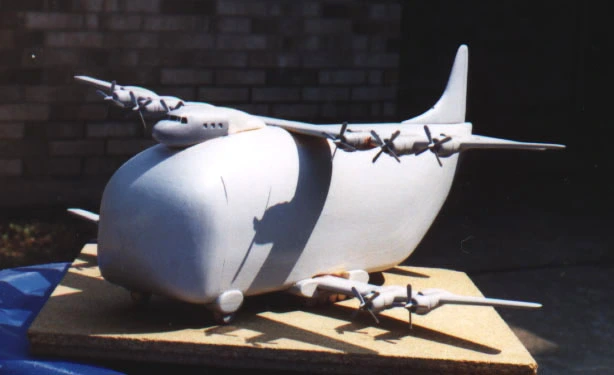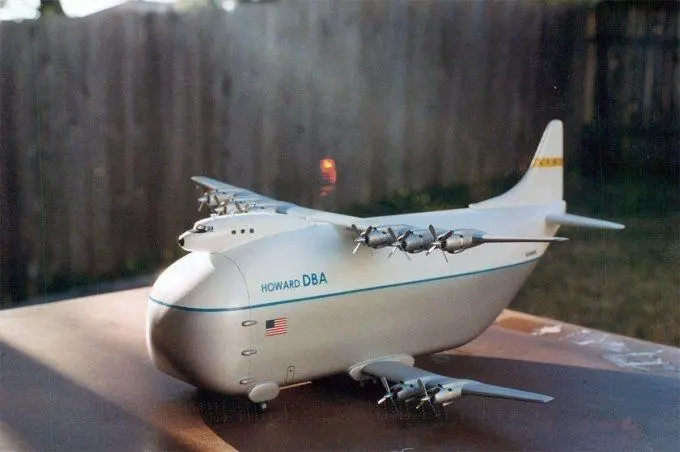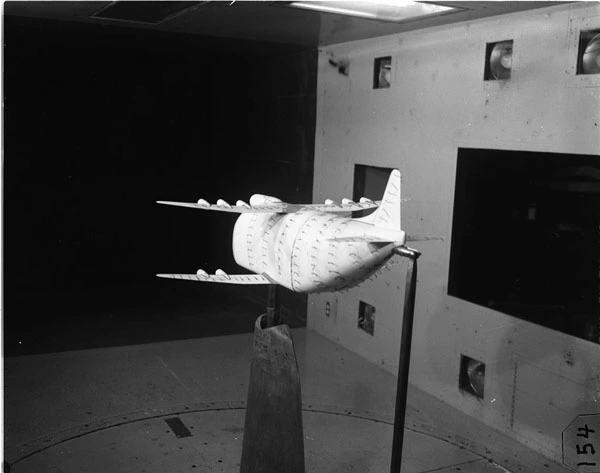The Urgent Need for a ‘Damn Big Airplane’ in the Space Race
In the mid-1960s, at the height of the Space Race, NASA faced a monumental challenge: efficiently transporting the colossal Saturn rocket booster – the very heart of the ambitious Apollo program – from its manufacturing facilities in California to the launch site at Cape Kennedy in Florida.
The existing method of relying on ships, specifically barges and ocean-going vessels, to ferry the immense 166-foot-long, 40-foot-diameter rocket stages through the Panama Canal, was proving to be prohibitively slow, costly, and fraught with logistical complexities. The journey could take weeks, significantly impacting the rapid pace required by the U.S. space program.
Recognizing this critical bottleneck, NASA issued an urgent call for innovative solutions, actively soliciting proposals from various aviation companies for a groundbreaking heavy-lift transport aircraft. This aircraft needed to safely and swiftly move the gargantuan Saturn V components, accelerating the path to the moon.
Among the submitted designs, one bold concept stood out: the DH-100 DBA, conceived by the renowned Dee Howard Co. – aptly nicknamed the ‘Damn Big Airplane’.

Dee Howard Co. and the Revolutionary DH-100 DBA Design
Dee Howard, an aviation visionary, had already made significant contributions to the aerospace industry, including work on the Learjet and the development of crucial thrust reverser systems for jet engines.

His company, Dee Howard Co., was known for its innovative approach to aircraft modifications and design. When presented with NASA’s challenge, Howard envisioned a truly unprecedented solution: a massive aircraft designed specifically to cradle and transport the cylindrical rocket stages.
The proposed Howard DH-100 DBA was not merely a concept on paper. Extensive wind-tunnel tests, confirmed the aerodynamic soundness of its audacious design. These tests demonstrated that, despite its unconventional and somewhat ‘ungainly appearance,’ the aircraft possessed the potential for stable flight and the immense lifting capability required.

The DH-100 DBA featured an impressive wing span and was designed to be powered by eight turboprop engines, highlighting the sheer scale and engineering ambition behind what truly deserved its colloquial moniker: the ‘Damn Big Airplane’

The Unbuilt Dream: Why the DH-100 DBA Never Flew for NASA
Despite the promising wind-tunnel test results and Dee Howard’s unwavering belief in his design, a full-size DH-100 DBA was ultimately never constructed. The project, much like many ambitious prototypes of its era, fell victim to a complex web of bureaucratic infighting and shifting priorities within government agencies.

While the initial need for an air transporter for Saturn components was clear, NASA had also explored and invested in other, more conventional, and ultimately more readily available solutions.
One significant factor was the emergence and proven capability of the Guppy series of cargo aircraft (such as the Aero Spacelines Super Guppy), which, while perhaps less elegant than Howard’s vision, could already transport many of the required rocket parts. Furthermore, improvements in water-based transport via specialized barges also continued to be a viable and cost-effective alternative.

The immense cost and technical challenges associated with developing an entirely new class of heavy-lift aircraft, coupled with the diminishing urgency as other transport methods matured, contributed to the project’s quiet cancellation. The Dee Howard DBA remained a testament to ingenuity, but one that stayed on the drawing board.
The Legacy Lives On: The DH-100 DBA RC Model
Even though the full-scale DH-100 DBA never took to the skies, Dee Howard’s conviction in his ‘Damn Big Airplane’ concept remained strong. To prove the fundamental soundness of his design, he commissioned the construction of a detailed radio-controlled (RC) model of the massive aircraft.
This highly anticipated RC model had its maiden flight on August 21, 2001, a poignant moment that, decades after the original project’s cancellation, finally demonstrated the feasibility of the unique design.
The successful flight was piloted by Torn Prescott, the skilled designer behind the RC model itself. This event provided tangible proof that Dee Howard’s bold vision, if fully realized, would indeed have been capable of flight.
Today, the Howard DBA stands as a fascinating footnote in aviation history – a testament to the boundless creativity and audacious engineering proposals generated during the intense era of the space race, reminding us of the groundbreaking ideas that, while never fully built, paved the way for future advancements in heavy-lift aviation and aeronautical design.








